ANGOLA, CONGO, CHINA AND THE GHOST TOWNS
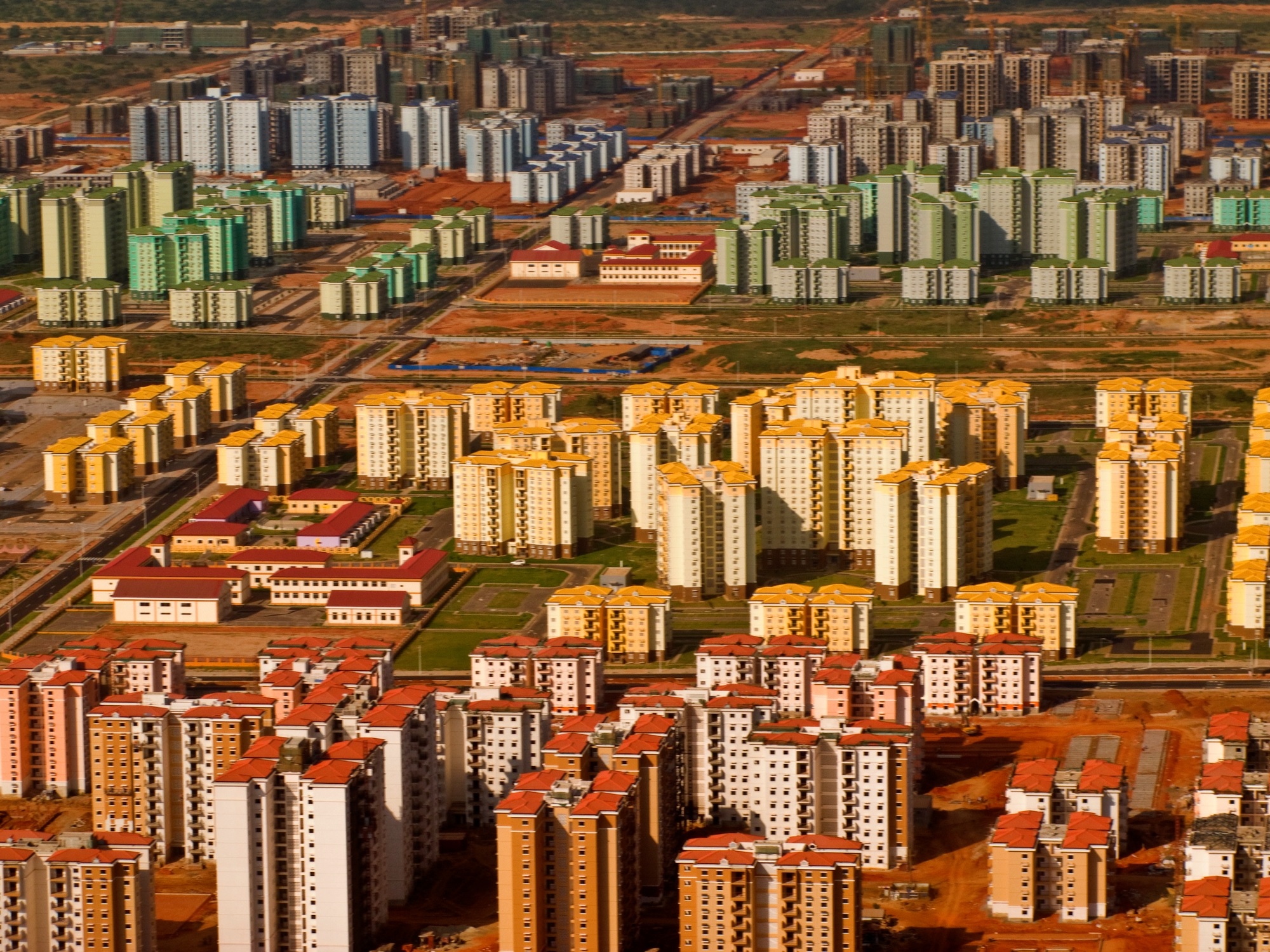
The need to improve the planet’s logistics networks continues to grow, especially with the increasing uncertainty over peace and the availability of energy and mineral resources. Especially on African soil, which offers the greatest possibilities and is the most backward, a real race has broken out between Europeans, Russians, Arabs and (above all) the Chinese. The latter, in fact, have been investing billions of dollars in Africa for years, without setting political or humanitarian conditions, disregarding corruption and the progress of the local populations: the important thing is to win the race and secure control of the largest possible part of the continent.
This gigantic project is carried out without taking into account the profound cultural differences that exist between Chinese and Africans, and sometimes leads to paradoxical situations, such as the creation of ultra-modern cities (in the picture, that of Quilembe, in Angola) that remain empty: the Chinese workers, whose arrival was expected in the thousands, have stayed at home, and not only because of the pandemic, and the locals cannot afford to move into these model districts. They are now ghost towns, with Chinese companies struggling to keep them functional, should the wind change.
One thing is certain: the wind must change, Africa is not only a land of conquest, but also and above all a land of emancipation. The inter-African organisations have woken up, are more solid and more independent, and are painstakingly learning to play with the interests of the sharks from abroad. Sharks who have the money and the project, but who need political and military stability to be able to implement and then subsequently administer it. Because without African governments, the continent will remain a victim of misery and violence.
Relations between China and Angola
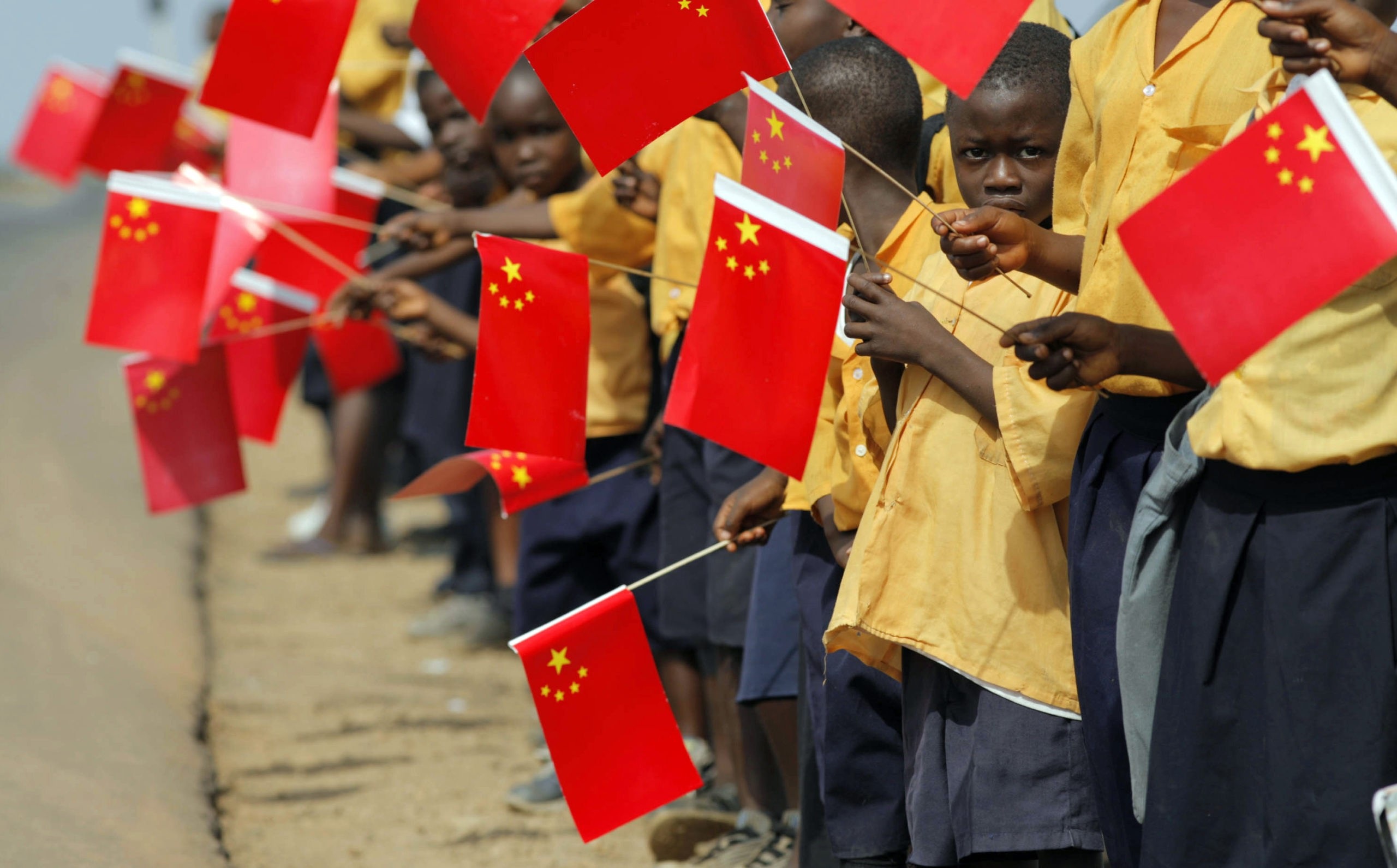
17 November 2020: on the road through the centre of Luanda, Angolan children greet visiting Chinese leaders on a business visit[1]
Angola is one of the countries that has benefited most from the commercial expansion of the Chinese market. The first funds from Beijing arrived in 2002, after the end of the Angolan civil war, and Luanda had accepted them without discussing the details because the International Monetary Fund (IMF), for the same amount, wanted to impose strict conditions on transparency and reforms[2]. The lack of transparency on the actual use of the funds held back Western countries[3], but not China, which seized the opportunity to get its hands on the country’s raw materials and find new markets on which to sell its goods[4], agreeing not to disturb the nepotistic and clientelistic system of former President José Eduardo Dos Santos[5].
After months of negotiations, in 2004, the EXIM Bank of China agreed on USD 2 billion in oil-guaranteed loans to finance the country’s reconstruction: the result was a boom in infrastructure, new housing, roads and power stations. The loans are sold by the Bank directly to the Chinese companies in charge of building the infrastructure, thus avoiding Angolan intermediaries[6]. According to estimates by the School of Advanced International Studies-China Africa Research Initiative, between 2000 and 2018 Angola received 43 billion Chinese dollars for infrastructure[7] (compared to 400 billion dollars of total Chinese investment from 2009 to 2021 in the whole of Africa[8]).
Chinese loans are conditional on the use of Chinese labour and contractors (70%) and the acceptance of the ‘One-China Policy’, which considers Hong-Kong and Taiwan to be rebel provinces and not independent states[9]. China’s policy of non-interference in Angola’s internal affairs allowed the economy to grow by 11% per year between 2001 and 2010 under the leadership of the Dos Santos family and the Movement for the Liberation of Angola (MPLA)[10]: oil production doubled and China became the main importer, replacing the US[11] that had allowed the MPLA to win the civil war[12]: “From 2004 onwards, the MPLA has been able to diversify its foreign relations, distance itself from foreign pressures and maximise the external resources allocated to the reconstruction programme, in order to establish itself as the main proponent of the country’s rebirth”[13].
The ‘Angola model’ (‘Angola Mode’, the exchange of natural resources for large-scale infrastructure projects[14]) was successful until mid-2014, when oil prices collapsed, forcing Luanda to pump more oil to pay its debts. When global oil prices plummeted below $50 per barrel (down from $115 a few months earlier), the Angolan economy went into recession (2016) and contracted for five consecutive years – due to the pandemic, which further exacerbated the problem, the country only narrowly managed to avoid a debt default[15]. The lack of transparency on investment flows between Beijing and Luanda does not help either: historically, China is very evasive on aid to African countries, at least until 2019[16].
In September 2017, João Manuel Gonçalves Lourenço became the new president and started to fight corruption, diversify the economy[17] and reduce dependence on China, which he called ‘a matter of life and death’[18]. Chinese companies (most of them builders) start to leave the country, as the major housing projects are completed, and the International Monetary Fund and the World Bank advise Angola to stop the practice of oil-backed loans, as Angola still owes China more than USD 23 billion[19]. In any case, most of Angola’s production for the coming years is destined for China, putting the country in a trap (debt-trap diplomacy[20]), because it prevents it from selling its main source of income on the free market[21]. Debts bind the governments of African countries to China, and their burden risks becoming unbearable, as happened with the Democratic Republic of Congo[22]. Since Lourenço’s election, the number of Chinese living in Angola has dropped from over 300,000 to less than 20,000[23].
Oil for housing
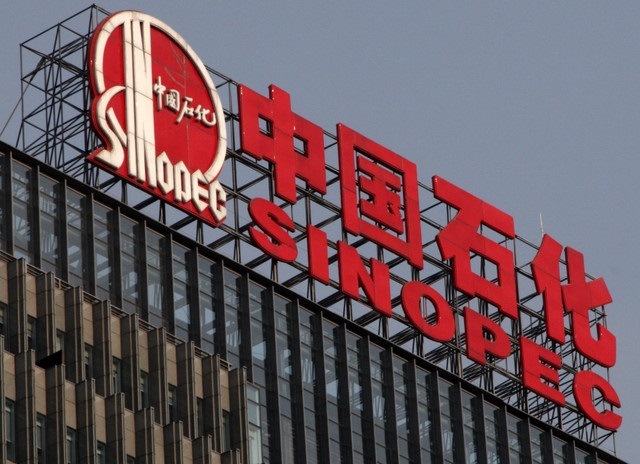
Sinopec, the oil group that has been a partner of the Angolan government for almost 20 years in the exploitation of offshore deposits near the country’s northern coast[24]
Since the 2004 agreements, Chinese companies have imported tens of thousands of workers for the reconstruction of the country[25]: in 2010, more than 400 Chinese state and private enterprises were operating in Angola[26]. Most of the Chinese credits were entrusted to some of the largest companies, such as CRBC China Road Bridge Cooperation, China Railway Corporation, Huawei Technologies Co Ltd or CITIC Group Corporation Ltd. The agreements between Luanda and Beijing stipulate that Chinese companies receive 70% of all Angolan infrastructure contracts. In addition, 50% of materials, technologies and equipment must come from China, and they are not obliged to use Angolan labour, because there is a lack of local skilled workers and language barriers are often insurmountable[27].
One of the symbols of Chinese involvement in Angola is the plethora of new towns and residential districts built near the main Angolan cities. On the outskirts of Luanda alone, five new towns have grown up: Kilamba Kiaxi, Cacuaco, Zango, Km 44 and Capari[28]. The result is that entire neighbourhoods, such as Cidade de Kilamba, consist of 750 eight-storey buildings housing 500,000 people, and remain empty. The project cost USD 3.5 billion and was built by China International Trust and Investment. Nobody buys the flats because they cost too much: $120,000 to $200,000 each. Because of the many employees of multinationals operating in Angola, Luanda is one of the most expensive cities in the world, especially for the cost of flats[29].
Not only residential areas: railways, bridges, roads, dams, stadiums, ports, schools, airports – everything is growing from nothing in record time. The headquarters of the African Union itself, a twenty-storey tower inaugurated eight years ago in Addis Ababa, is a ‘gift’ from China. According to Le Monde, Beijing has made a gift to itself by connecting the building’s computer network to a spy centre in Shanghai (a claim obviously denied by Beijing). The Chinese create thousands of jobs in mines, plantations, warehouses and export-import companies. They are a lifeline for the African middle class and import inexpensive consumer goods, from mobile phones to bicycles[30].
The pandemic has changed the situation: in 2021, the trade relationship between the two countries reaches its peak, growing by 35% compared to the previous year (USD 254 billion, mainly due to increased Chinese exports of essential goods to combat the pandemic), making Angola China’s third largest trading partner in Africa (after South Africa and Nigeria)[31].
One Belt, One Road, the peaceful military invasion
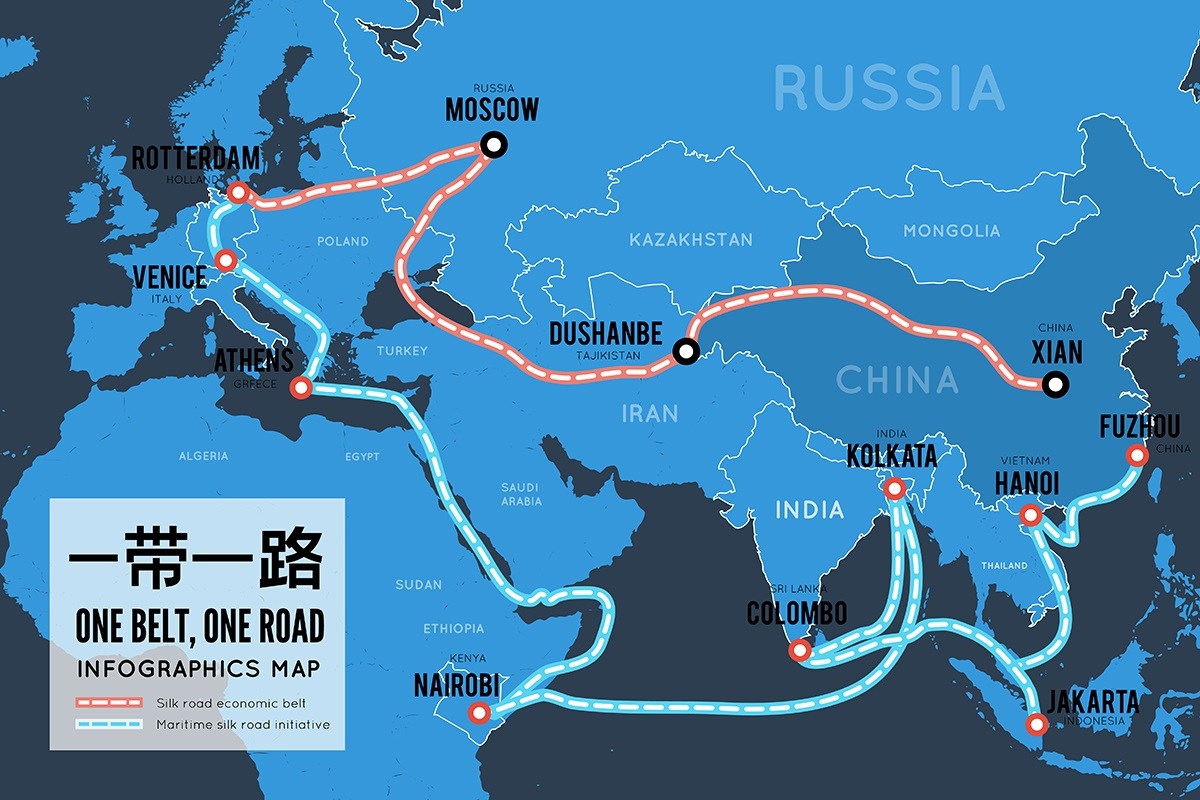
The ‘One Belt, One Road’ plan, decided by President Xi Jinping in 2013, aims to strengthen China’s connectivity with the world[32]
In 2018, Hongkong Mortgage Corporation (HKMC) signed an agreement with the Chinese government to purchase almost 30 billion in loans granted to various African countries. ‘The initiative aims to channel some of the capital of private banks into participating in infrastructure development in Africa, participating in the overall Silk Road development plan,’ says Helen Wong, Executive Director of HKMC, which is seeking to involve other financial institutions in the operation. The plan is working: about 90 banks, insurance companies and financial institutions are interested in joining HKMC[33]. The deal comes at a delicate time: the Chinese government is under pressure from the Communist Party’s Central Committee, which has serious misgivings about the current policy of lending to Africa, due to which China risks a financial bubble.
The prestigious state-owned insurance company Sinosure is very cautious about lending after the $1 billion loss it suffered for insuring a railway project to connect the port of Djibouti[34] with Ethiopia, and calls for more caution in its risk analysis[35]. The agreement looks like an attempt by the Chinese government to offload the risks of investments in Africa to private financial institutions. By absorbing the debts of African countries in this way, the banks will allow the Chinese government to allocate new investments to complete the African Silk Road project. This project is of crucial geopolitical importance because it allows the isolation of Western powers[36].
Since 2012, more than 200,000 Chinese workers have moved to Africa to work on the One Belt One Road project, bringing the number of Chinese immigrants on the continent to one million. There are more than 10,000 Chinese companies present in Africa, of which at least 2,000 are state-owned enterprises. In 2019, Beijing announced a USD 1 billion Belt and Road Africa infrastructure development fund[37], and a year earlier, in 2018, it had already allocated a huge USD 60 billion[38] aid package[39].
In October 2019, the plan involved 138 countries (in 2021, Botswana became the 46th African country to sign up to it[40]) with a combined gross domestic product of USD 29 trillion and a consumer base of around 4.6 billion people[41]. The project aims in particular to connect China to the Middle East, Africa and Europe (by land, sea and air), in order to promote a wider circulation of Chinese products and stimulate Chinese investments abroad[42]. China not only invests in African infrastructure, but also moves manufacturing activities there: 128 industrial projects in Nigeria, 80 in Ethiopia, 77 in South Africa, 48 in Tanzania and 44 in Ghana. It seems that developing Africa is easier than developing China’s north-western territories, and this trend is set to continue in line with rising labour costs in China[43].
African leaders like the project[44] as an alternative to the uncertain long-term investment plans proposed by the Americans and Europeans[45]; the Russians like it because it offers military training and armaments. Thus Beijing’s offer has been welcomed with open arms, granting the exploitation of resources and a share in the infrastructure projects implemented, in exchange for money and without interference in the country’s internal politics, which is the first condition that Westerners have always demanded[46]. The flip side of the coin: China’s support for the ruling parties undermines its ability to be an impartial arbiter in conflict resolution in the Horn of Africa[47].

African countries that signed the Memorandum of Understanding for the Belt and Road Project[48]
There is no doubt that China pursues its own interests: it gains access to crucial natural and mineral resources (such as cobalt and copper from the Congo), takes advantage of fertile land, promotes its products on new markets, allows companies to cut labour costs, and forges military alliances that consolidate its influence. Chinese colonialism is certainly a new form of colonialism, which brings with it the usual things: environmental damage, racist attitudes, exploitation of workers, poor quality products[49]. Nevertheless, the list of major investments is impressive:
- Algeria: the highway and port of Cherchell strategically linking the Mediterranean with Niger, Nigeria and Chad, accessing a market of 275 million landlocked people. Added to this is the enormous work (USD 3.3 billion) to redevelop the port of El Hamdania[50];
- Ethiopia: the railway from Addis-Ababa to Djibouti that was inaugurated on 1 January 2018, providing Ethiopia, a landlocked country of 110 million people, with a link to Djibouti and the port of Doraleh – a crucial link, given that more than 95% of Ethiopia’s trade passes through Djibouti and accounts for 70% of the port’s business[51];
- East African Railway Master Plan – is a proposal to rejuvenate the railways serving Tanzania, Kenya, Ethiopia and Uganda and to add rail sections to serve Burundi and Rwanda. The aim is to foster economic development in East Africa by increasing the efficiency and speed (and reducing costs) of freight transport between the main ports on the Indian Ocean coast and inland[52];
- Mozambique: Maputo-Katembe Bridge – this is the longest suspension bridge in Africa: it crosses Maputo Bay and connects the Mozambican capital with the suburb of Katembe. The bridge was inaugurated on 10 November 2018, the construction work (costing USD 785 million) was carried out by the China Road and Bridge Corporation and a large part of the project was financed by the Chinese Exim Bank. With the bridge, the entire (as yet undeveloped) south coast will be urbanised and the extension of the road to Ponta do Ouro and Kwa-Zulu Natal (South Africa) is set to significantly shorten travel times and attract tourism to the area[53];
The list could be even longer: the Mombassa-Nairobi railway, linking the two capitals to the ports[54], or the Lagos-Kano railway, crossing Nigeria from the port of Lagos on the Atlantic Ocean to Kano, near the Niger border[55], and others.
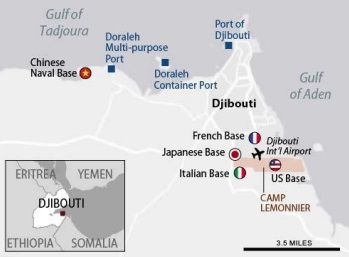
Harbours and military bases in Djibouti[56]
Sub-Saharan African ports play a key role in the Belt and Road Initiative. By buying up African debt, China is taking control of strategic ports, such as Doraleh Multipurpose Port (in which China Merchants Group owns almost a quarter of the shares[57]), a port at the entrance to the Red Sea. In 2021, 82% of Djibouti’s debt, with its strategic location and connection to Ethiopia, was in the hands of Beijing, which will take the port if it defaults[58]. In 2017, China built a military base in the vicinity of the port[59] with 2000 soldiers stationed there[60]. The Chinese government justifies its military facility with ‘the desire to contribute to humanitarian aid, peace and stability in Africa’[61]. That is, the proximity to piracy and maritime terrorism of Somali origin.
Since 2008, China has participated in international anti-piracy operations in the Gulf of Aden. In fact, Beijing is adamant in describing the base as a ‘support facility’ for supplying the Chinese navy, downplaying the military aspect. Although it is not the first foreign power to base itself in Djibouti (the country has hosted French forces since the 19th century, but Italian, Spanish, Japanese and German armed forces are also active in the area, especially for anti-piracy operations in the Gulf of Aden and for UN peacekeeping efforts in Africa[62]), China contributes 10% of the UN peacekeeping budget and has trained 8,000 soldiers ‘to serve as a permanent reserve militia for UN peacekeeping operations’[63].
The ‘Belt and Road Initiative’ extended the Silk Road across the Indian Ocean to Africa, justifying the presence of a Chinese security contractor to protect economic interests and keep trade channels open[64]. Furthermore, the military base in Djibouti allows the Chinese Navy to implement a military policy in the distant seas[65]. Another example is the port of Mombasa in Kenya, among the most important in East Africa, which is the collateral for the USD 3.2 billion loan for the line connecting it to Nairobi. If Kenya does not pay up, the Exim Bank of China takes control[66], even though it is a controversial deal[67]: In May 2022, members of the Kenyan parliament demanded that one of the clauses in the loan with China for the 364 billion escudos Standard Gauge Railway (SGR) be revised[68].
In order to avoid finding itself isolated to counter Western plans, as of 2018 Beijing is allied with Russia, which maintains its influence over Libya, Mali and the Central African Republic, while China expands to Eritrea, Ethiopia, Sudan and Zimbabwe. This list is set to grow according to Moscow and Beijing’s joint plan to deprive the United States and the European Union of access to African natural resources. An alliance made even more strategic in the context of international tensions caused by the conflict in Ukraine and the dispute over Taiwan[69]. As of 2021, China is increasing its military presence in Africa. There are rumours that Beijing will open its second naval base in Africa, on the Atlantic coast: popular locations include Equatorial Guinea, Angola and Namibia[70].
China has produced new destroyers, frigates, fighter planes, amphibious ships, helicopters and unmanned aircraft for long-range attacks and reconnaissance. Many new weapons and platforms were tested and deployed in African waters during the anti-piracy missions in the Gulf of Aden that began in 2008 – China’s first deployments outside the Western Pacific. In short, Africa is a test bed for Chinese military operations in ‘distant seas’[71].
Needless to say, the Chinese military has a wide range of options: until 2019, 46 African ports have been built, financed or are operated by Chinese state-owned shippers, and 90% of African exports depend on ports[72]. Forming the backbone of China’s ‘Maritime Silk Road’, investments in African ports represent a gateway to trade and economic development in the region[73].
Bolloré in Congo
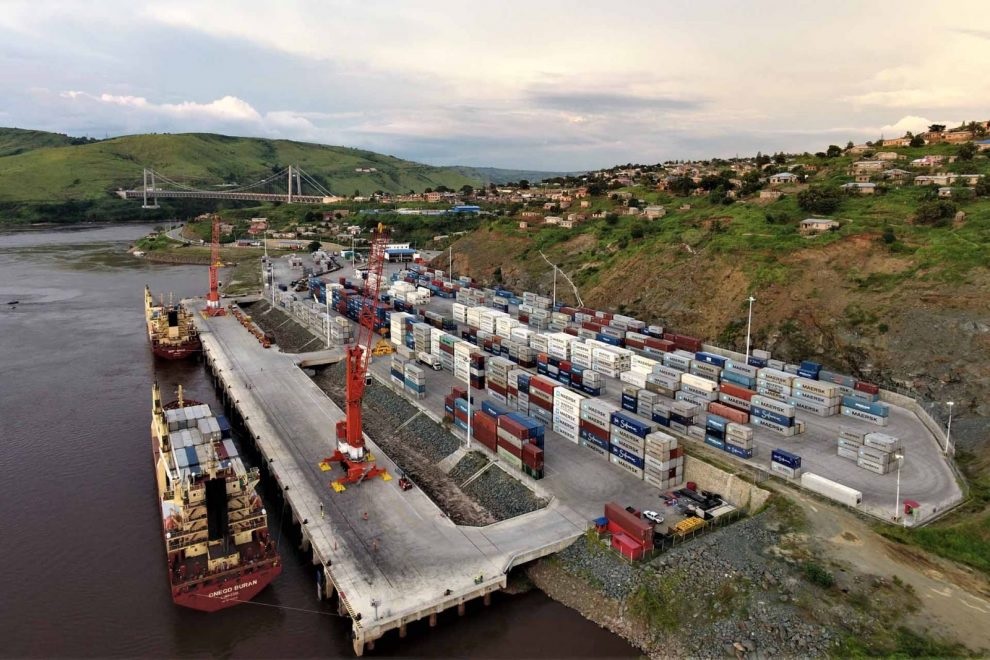
The port of Matadi before the start of the Bolloré group’s work that will transform it into the largest river port in the world[74]
A few kilometres further north, international development funds are pushing the DRC government to privatise the transport sector, which is partially controlled by state-owned companies: the port and railway networks are interconnected but inefficient. The important ports of Matadi, Boma and Banana suffer from competition from the port of Pointe Noire (in Congo), which absorbs 60% of the DRC’s import/export cargo volume.
The port of Matadi is the most important seaport in the DRC, with 90% of maritime traffic (excluding oil tankers)[75]. Bolloré Africa Logistics (BAL) has made massive investments there: the deep water port expansion, a new container terminal, the rehabilitation of the railway tracks to Brazzaville, the motorway and the new port in Brazzaville[76]. By the first quarter of 2023, Mediterranean Shipping Company (MSC), the group of the Italian shipowner Gianluigi Aponte, will take over all of Bolloré Africa Logistics’ activities in ports, hinterlands, logistics and maritime transport on the Dark Continent for a sum of EUR 5.7 billion[77]. Together, the two companies will form a true continental oligopoly in a year’s time.
It seems that BAL has made an offer to SCTP to manage the port of Kinshasa and the Matadi-Kinshasa railway line. The SCTP trade unions oppose this because they fear a reduction in personnel. If the deal were to go through, BAL would control multimodal transport from the Atlantic to Brazzaville and Kinshasa, and from there it could reach, via river, the other countries of the Congo River economic area[78].
Not only that. Behind the apparently reckless investment dared by Bolloré in Matadi, lie a whole series of coordinated projects, at the basis of which is an idea as simple as it is reckless: to efficiently connect the Red Sea with the Atlantic Ocean, at Matadi, in order to halve the cost and time of transporting Congolese and Angolan natural resources with the Indian Ocean and the large Arab, Chinese, Indo-Chinese and Japanese markets. Such projects have existed for over a century[79], were imagined by the European colonial power, and failed in the face of the technological, financial, military and industrial commitment problems of the past[80].
At the beginning of the 21st century, it was pan-African organisations that revitalised the project, and some sections were actually implemented[81]. But these projects only consider the connection of Kinshasa and Brazzaville with the north and south of the continent as relevant. Bolloré’s idea of investing first in Matadi and then in the port of Kisangani (more than 2000 kilometres upriver, currently in decay and administered by the Congolese state transport company STCP[82]) is part of a much more important project, which is to build a truck road, militarily defended and equipped with intermediate stations for the supply of fuel, water and provisions, spare parts and medical treatment, starting from Kisangani and, via Uganda and Eritrea, arriving at the port of Berbera[83], in Somaliland, which belongs to the DCP (United Arab Emirates) group, an important partner of Bolloré Logistics worldwide[84].
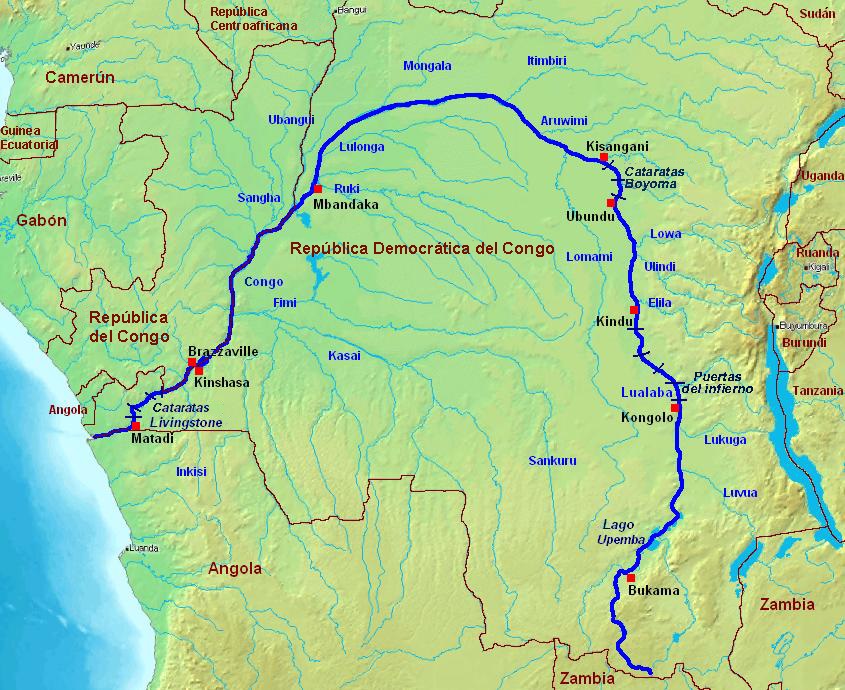
The Rio Congo, the world’s deepest river, can provide an alternative logistics network by truck and plane for the Democratic Republic of Congo and its neighbours: Zambia, Uganda, Rwanda, Burundi and Tanzania[85]
The only alternative to this project: the ports already built by the Chinese in Zimbabwe, Mozambique, Namibia, the Seychelles, Zambia and Tanzania, which receive more than 90% of their arms transfers from China[86]. We are only talking about port arms, because the amount of Chinese arms circulating in Africa is frightening, with Kenya and Ghana receiving more than half, as part of a network that, in 2014, the China Naval Research Institute clearly defined: Djibouti, Seychelles, Tanzania, Myanmar, Pakistan, Cambodia and Sri Lanka. Kenya, along with Indonesia, Myanmar, Pakistan, Sri Lanka, Singapore and the United Arab Emirates is part of a similar land-based military deployment report published in 2018[87].
The pandemic increased tensions: when the G-20 countries proposed to suspend African debt, Beijing opposed the decision. China is the continent’s largest creditor, surpassing even the World Bank, and does not accept flexibility. Major infrastructure projects have been at a standstill for months because of the coronavirus. Reports of discrimination and mistreatment of Africans in Guangzhou, accused of carrying covid, further aggravate the situation[88]. Most Africans see China’s influence as positive[89], thanks to investments in infrastructure, agriculture, education and vocational training. The situation could change if China starts being seen as a military power that shows its muscles, rather than as a development partner[90].
Traditionally, China does not use its armed forces to protect its economic interests abroad, relying on private, unarmed security companies in cooperation with local forces. Criminal and terrorist attacks have lately pushed the Chinese government to arm its private companies: with the launch of the ambitious ‘Belt & Road Initiative’ projects, Beijing has encouraged the establishment of new private security companies, which provide intelligence-gathering, risk assessment and crisis prevention services, as well as the protection of personnel from possible kidnapping and abduction[91]. The $60 billion investment promise made in 2019 requires Chinese security companies to also be able to choose reliable local partners[92].
The new fear
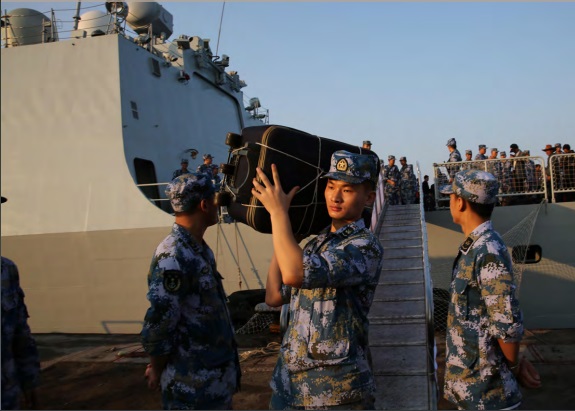
Chinese soldiers stationed in Africa[93]
There are 5000 registered security companies in China (all state-controlled), employing 4.3 million former military and police officers. Twenty of these are authorised to operate abroad and officially employ 3,200 contractors, a number that is already higher than the army’s peacekeeping deployments, but the real number is undoubtedly much higher[94]. This creates nervousness among African populations and governments, who are undecided whether it is better to have less security in the face of possible attacks by criminal organisations, or to grant control of their territory to a foreign power[95].
The increased operational capacity of Chinese security companies and the constant growth of economic and infrastructure projects, as well as the significant increase of Chinese workers on the continent, have contributed to the suspicion that behind the apparent private nature of these security companies there is instead a veiled ambition on the part of Beijing to exercise control, including political control, in the various areas concerned. Many African and international non-governmental organisations, as well as independent pan-African platforms, believe that these protection garrisons are actually Army or Police units, under the direct aegis of the Chinese Communist Party. The presence of former officials of these government security forces within private security companies has certainly contributed to this opinion[96].
African public opinion is influenced as much by the colonial past as by the collective memory of the actions carried out by many mercenaries during the post-colonial conflicts; moreover, the changes within the Chinese security companies resemble those of their Russian counterparts. The population is afraid that there is a risk that African governments will submit to Chinese instructions, given Beijing’s economic power, negotiating trade agreements to their disadvantage and without any control and decision-making capacity[97].
Many African organisations have started campaigns against illegal exploitation of resources and attempts to defraud local populations. In March 2020, the Zimbabwe Environmental Law Association (ZELA) asked the government for a detailed report on the contractual arrangements and activities surrounding the Sengwa coal-fired power plant, a $3 billion project financed by the Chinese Gezhouba Group Co, whose security is coordinated by the China Security Technology Group[98]. The Kenya Law Society has been fiercely campaigning for the Kenyan High Court to declare the Standard Gauge Railway contract between the Kenyan government and the China Roads and Bridges Corporation, the main client of DeWe (Chinese private security company) in the country, illegal in June 2020[99].
In Ghana, environmental activists have sued the government to block a deal whereby Sinohydro Corporation Ltd, the Chinese hydropower and construction giant, finances $2 billion worth of rail, road and bridge networks in Ghana in exchange for 5% of the country’s bauxite reserves, although the value of the mineral resource could turn out to be much higher[100]. A similar action has been taken by civil society groups in Guinea, who have launched a petition against a $20 billion deal that would give China access to its bauxite reserves[101]: an interesting fact, since Beijing imports half of its bauxite needs from this country[102].
This situation is evolving at great speed, even if one speaks of billions as if they were peanuts. The interests at stake are gigantic, at least as gigantic as the projects and the dangers associated with them. It is a situation that is the greatest challenge in the history of the African continent: either it is capable of taking its destiny into its own hands, now, or it risks a new wave of colonialism, fiercer and more lasting than the previous ones.
JPN016
[1] https://plataformamedia.com/en/2020/11/18/china-wants-to-invest-more-in-angola/
[2]https://www.geopolitica.info/china-angola-honeymoon-over/ ; http://worldcat.org/title/1018163324 ; https://www.cesi-italia.org/en/articles/il-ruolo-dell-angola-mode-nelle-relazioni-tra-cina-e-luanda
[3] https://www.cesi-italia.org/en/articles/il-ruolo-dell-angola-mode-nelle-relazioni-tra-cina-e-luanda
[4] https://www.africarivista.it/la-famosa-invasione-dei-cinesi-in-africa/186594/
[5] https://www.makaangola.org/2012/01/presidente-jose-eduardo-dos-santos-nepotismo-corrupcao-e-propaganda-na-cnn/ ; https://sol.sapo.pt/artigo/592705/dos-santos-defende-nepotismo
[6] https://www.cesi-italia.org/en/articles/il-ruolo-dell-angola-mode-nelle-relazioni-tra-cina-e-luanda
[7] https://www.geopolitica.info/china-angola-honeymoon-over/
[8] https://www.africarivista.it/la-famosa-invasione-dei-cinesi-in-africa/186594/
[9] https://www.bbc.com/news/world-asia-china-38285354
[10] https://www.cesi-italia.org/en/articles/il-ruolo-dell-angola-mode-nelle-relazioni-tra-cina-e-luanda
[11] https://www.geopolitica.info/china-angola-honeymoon-over/
[12] Microsoft Word – Angola Report 13. Draft.doc (ibiworld.eu), pages 114-135
[13] https://www.cesi-italia.org/en/articles/il-ruolo-dell-angola-mode-nelle-relazioni-tra-cina-e-luanda
[14] https://www.cesi-italia.org/en/articles/il-ruolo-dell-angola-mode-nelle-relazioni-tra-cina-e-luanda
[15] https://www.geopolitica.info/china-angola-honeymoon-over/
[16] https://www.cesi-italia.org/en/articles/il-ruolo-dell-angola-mode-nelle-relazioni-tra-cina-e-luanda
[17] https://www.reuters.com/article/us-angola-politics/angolas-first-new-president-in-38-years-vows-to-fight-graft-idUSKCN1C12G0?il=0 ; https://www.notiziegeopolitiche.net/angola-joao-lourenco-ha-prestato-giuramento-per-un-secondo-mandato/
[18] https://www.africarivista.it/la-famosa-invasione-dei-cinesi-in-africa/186594/ ; https://www.imf.org/-/media/Files/Publications/CR/2022/English/1COGEA2022001.ashx
[19] https://www.africarivista.it/la-famosa-invasione-dei-cinesi-in-africa/186594/ ; https://www.imf.org/-/media/Files/Publications/CR/2022/English/1COGEA2022001.ashx
[20] https://go.gale.com/ps/i.do?p=AONE&sw=w&issn=2056564X&v=2.1&it=r&id=GALE%7CA692711086&sid=googleScholar&linkaccess=abs&userGroupName=anon%7Ea016c01b
[21] https://www.geopolitica.info/china-angola-honeymoon-over/
[22] https://www.africarivista.it/la-famosa-invasione-dei-cinesi-in-africa/186594/ ; https://www.imf.org/-/media/Files/Publications/CR/2022/English/1COGEA2022001.ashx
[23] https://www.scmp.com/news/china/diplomacy/article/3183912/end-angola-model-sees-number-chinese-oil-rich-african-country
[24] https://castelvetranonews.it/notizie/attualita/italia/se-la-cina-colonizza-lafrica-senza-dare-lavoro-ma-favorendo-lespansione-cinese-e-la-fuga-degli-africani/
[25] https://www.cesi-italia.org/en/articles/il-ruolo-dell-angola-mode-nelle-relazioni-tra-cina-e-luanda
[26] https://anthrosource.onlinelibrary.wiley.com/doi/10.1111/aman.13558
[27] https://www.cesi-italia.org/en/articles/il-ruolo-dell-angola-mode-nelle-relazioni-tra-cina-e-luanda
[28] Oil for Housing: Chinese-built new towns in Angola. David Benazeraf & Ana Alves. Global Powers and Africa Programme, SAIIA, April 2014: https://saiia.org.za/wp-content/uploads/2014/04/Policy-Briefing-88.pdf
[29] https://www.internazionale.it/foto/2012/07/13/la-citta-fantasma
[30] https://www.africarivista.it/la-famosa-invasione-dei-cinesi-in-africa/186594/
[31] https://qz.com/africa/2123474/china-africa-trade-reached-an-all-time-high-in-2021/
[32] https://asiasociety.org/texas/events/chinas-belt-and-road-initiative-examining-its-economic-and-military-implications
[33] https://lindro.it/la-cina-privatizza-il-debito-africano/
[34] https://www.notiziegeopolitiche.net/gibuti-primo-porto-detiopia-e-dellafrica/
[35] https://lindro.it/la-cina-privatizza-il-debito-africano/
[36] https://lindro.it/la-cina-privatizza-il-debito-africano/
[37] https://www.silkroadbriefing.com/news/2019/07/04/us-1-billion-belt-road-africa-fund-launched/
[38] https://africacenter.org/spotlight/chinese-security-firms-spread-african-belt-road/
[39] https://www.brookings.edu/blog/africa-in-focus/2018/09/06/figures-of-the-week-chinese-investment-in-africa/
[40] https://www.silkroadbriefing.com/news/2021/01/12/chinas-2021-progress-across-the-african-belt-road-initiative/
[41] https://chinapower.csis.org/china-belt-and-road-initiative/
[42] https://www.africarivista.it/la-namibia-si-avvia-ad-aderire-alla-nuova-via-della-seta-cinese/128247/
[43] https://www.silkroadbriefing.com/news/2021/01/12/chinas-2021-progress-across-the-african-belt-road-initiative/
[44] https://www.africarivista.it/la-namibia-si-avvia-ad-aderire-alla-nuova-via-della-seta-cinese/128247/
[45] https://www.farodiroma.it/lespansione-militare-della-cina-in-africa-basi-navali-per-il-controllo-delle-rotte-marittime-f-beltrami/
[46] https://www.africarivista.it/la-famosa-invasione-dei-cinesi-in-africa/186594/
[47] https://africacenter.org/spotlight/china-diplomacy-horn-conflict-mediation-power-politics/
[48] https://www.silkroadbriefing.com/news/2019/07/04/us-1-billion-belt-road-africa-fund-launched/
[49] https://www.africarivista.it/la-famosa-invasione-dei-cinesi-in-africa/186594/
[50] https://www.africaintelligence.com/north-africa/2021/05/24/cherchell-port-link-to-motorway-to-cost-e150m,109668186-bre ; https://www.africanews.com/2016/01/20/algeria-and-china-sign-33-billion-port-deal/
[51] https://www.globaltimes.cn/page/202207/1270556.shtml ; https://www.mei.edu/publications/djibouti-needs-plan-b-post-guelleh-era#:~:text=Djibouti’s%20port%20handles%2095%25%20of,player%20in%20the%20Red%20Sea.
[52] https://www.pinsentmasons.com/out-law/analysis/east-african-rail-planning-investment ; https://www.theafricareport.com/185378/railways-tracking-east-africas-trade-renaissance/
[53] https://clubofmozambique.com/news/maputo-catembe-two-years-of-a-bridge-still-below-expectations-176873/ ; http://www.mofcom.gov.cn/article/beltandroad/mz/enindex.shtml
[54] https://www.railway-technology.com/projects/mombasa-nairobi-standard-gauge-railway-project/ ; http://www.mofcom.gov.cn/article/beltandroad/ke/enindex.shtml
[55] https://constructionreviewonline.com/project-timelines/lagos-kano-sgr-project-timeline-and-what-you-need-to-know/
[56] https://sgp.fas.org/crs/row/IF11304.pdf
[57] https://www.cfr.org/blog/chinas-strategy-djibouti-mixing-commercial-and-military-inter ests
[58] https://www.africarivista.it/la-famosa-invasione-dei-cinesi-in-africa/186594/
[59] https://sgp.fas.org/crs/row/IF11304.pdf
[60] https://africacenter.org/spotlight/considerations-prospective-chinese-naval-base-africa/
[61] https://www.cfr.org/blog/chinas-strategy-djibouti-mixing-commercial-and-military-interests
[62] https://www.cfr.org/blog/chinas-strategy-djibouti-mixing-commercial-and-military-interests
[63] Logan Pauley, “China Takes the Lead in UN Peacekeeping,” Diplomat, April 17, 2018, https://thediplomat.com/2018/04/china-takes-the-lead-in-un-peacekeeping/
[64] https://www.cfr.org/blog/chinas-strategy-djibouti-mixing-commercial-and-military-interests
[65] Erica Downs, Jeffrey Becker, and Patrick deGategno, “China’s Military Support Facility in Djibouti: The Economic and Security Dimensions of China’s First Overseas Base,” CNA, July 2017, vii.
[66] https://www.africarivista.it/la-famosa-invasione-dei-cinesi-in-africa/186594/
[67] https://theconversation.com/mombasa-port-how-kenyas-auditor-general-misread-chinas-standard-gauge-railway-contracts-182610 ; https://maritime-executive.com/article/report-port-of-mombasa-is-not-collateral-for-kenya-s-chinese-loans
[68] https://www.businessdailyafrica.com/bd/economy/mps-want-deal-mortgaging-mombasa-port-to-china-reviewed-3836418
[69] https://www.farodiroma.it/lespansione-militare-della-cina-in-africa-basi-navali-per-il-controllo-delle-rotte-marittime-f-beltrami/
[70] https://africacenter.org/spotlight/considerations-prospective-chinese-naval-base-africa/
[71] https://www.farodiroma.it/lespansione-militare-della-cina-in-africa-basi-navali-per-il-controllo-delle-rotte-marittime-f-beltrami/
[72] https://www.csis.org/analysis/assessing-risks-chinese-investments-sub-saharan-african-ports
[73] https://www.csis.org/analysis/assessing-risks-chinese-investments-sub-saharan-african-ports
[74] https://interkinois.net/kongo-central-signature-dun-protocole-pour-la-rehabilitation-du-port-de-matadi/
[75] https://dlca.logcluster.org/display/public/DLCA/2.1.1+Democratic+Republic+of+Congo+Port+of+Matadi
[76] https://dlca.logcluster.org/display/public/DLCA/2.1+Democratic+Republic+of+Congo+Port+Assessment
[77] https://www.shippingitaly.it/2022/03/31/affare-fatto-msc-acquisira-anche-bollore-africa-logistics/ ; https://www.startmag.it/smartcity/bollore-msc/
[78] https://dlca.logcluster.org/display/public/DLCA/2.1+Democratic+Republic+of+Congo+Port+Assessment
[79] https://en.wikipedia.org/wiki/Trans-African_Highway_network#/media/File:Map_of_Trans-African_Highways.PNG
[80] Guy Arnold, Ruth Weiß, “Strategic Highways of Africa”, Julian Friedman, London 1977
[81] https://en.wikipedia.org/wiki/Trans-African_Highway_network
[82] https://dlca.logcluster.org/display/public/DLCA/2.6+Democratic+Republic+of+Congo+Storage+Assessment
[83] https://www.africaintelligence.com/central-africa/2022/02/09/dp-world-qatar-and-abu-dhabi-ports-set-to-lock-horns-over-matadi-site,109732787-art
[84] https://www.thenationalnews.com/business/somaliland-project-opens-up-africa-for-dp-world-1.195002
[85] https://www.fundacionaquae.org/el-agua-del-rio-congo/ ; https://upload.wikimedia.org/wikipedia/commons/c/cb/Rio_Congo.png
[86] https://www.piie.com/blogs/realtime-economic-issues-watch/arms-and-influence-chinese-arms-transfers-africa-context
[87] https://africacenter.org/spotlight/considerations-prospective-chinese-naval-base-africa/
[88] https://www.africarivista.it/la-famosa-invasione-dei-cinesi-in-africa/186594/
[89] https://www.afrobarometer.org/publication/ad489-africans-welcome-chinas-influence-maintain-democratic-aspirations/
[90] https://africacenter.org/spotlight/considerations-prospective-chinese-naval-base-africa/
[91] https://www.africarivista.it/la-sicurezza-privata-cinese-in-africa-un-nuovo-tipo-di-colonialismo/186041/
[92] China’s Xi Pledges $60 Billion in Financing for Africa,” Associated Press, September 3, 2018, https://www.abqjournal.com/1216399/chinas-xi-pledges-60-billion-in-financing-for-africa.html
[93] https://www.nbr.org/wp-content/uploads/pdfs/publications/sr80_securing_the_belt_and_road_sep2019.pdf
[94] https://africacenter.org/spotlight/chinese-security-firms-spread-african-belt-road/
[95] https://www.africarivista.it/la-sicurezza-privata-cinese-in-africa-un-nuovo-tipo-di-colonialismo/186041/
[96] https://www.africarivista.it/la-sicurezza-privata-cinese-in-africa-un-nuovo-tipo-di-colonialismo/186041/
[97] https://www.africarivista.it/la-sicurezza-privata-cinese-in-africa-un-nuovo-tipo-di-colonialismo/186041/
[98] https://www.orfonline.org/expert-speak/china-green-promise-africa-case-zimbabwe-sengwa-coal-power-plant-67578/
[99] http://kenyalaw.org/caselaw/cases/view/228 ; https://www.business-humanrights.org/en/latest-news/kenya-china-road-bridge-says-its-community-projects-including-roads-boreholes-positively-impacting-lives/ ; https://www.business-humanrights.org/en/latest-news/kenya-activists-move-to-court-to-compel-government-to-publish-standard-gauge-railway-contracts/
[100] https://www.africarivista.it/la-sicurezza-privata-cinese-in-africa-un-nuovo-tipo-di-colonialismo/186041/
[101] https://www.globaltimes.cn/page/202204/1259631.shtml
[102] https://www.alcircle.com/news/chinas-bauxite-imports-in-june22-decline-21-m-o-m-as-supplies-from-guinea-australia-dip-due-to-bad-weather-82139

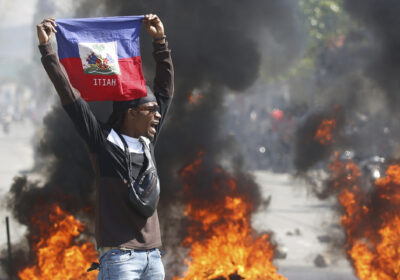
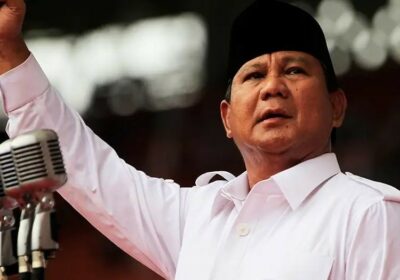

Leave a Reply